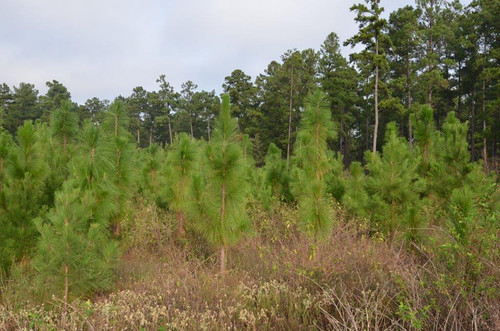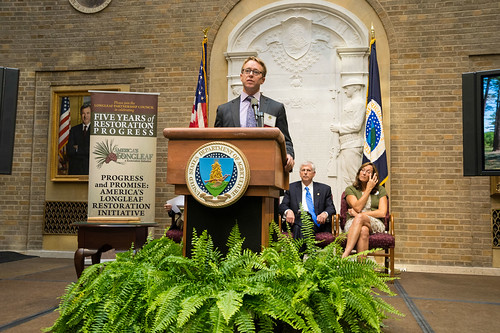
In deep East Texas, pine trees are king. Towering pines line the roads and blanket the rolling countryside and national forests. Loblolly and slash pine dominate the landscape in contrast to the area’s historic longleaf pine trees that once reigned.
The reduced number of longleaf pines has not gone unnoticed by landowners and conservationists. In response to the striking loss of longleaf pine trees from Texas to Florida, USDA’s Natural Resources Conservation Service (NRCS) launched the national Longleaf Pine Initiative, which provides technical and financial assistance for conservation practices that help restore longleaf pine forests and enhance existing pine stands.
Working alongside NRCS, Simon Winston of Winston 8 Ranch of Nacogdoches, Texas, is one landowner who is doing his part to help restore longleaf pine to its native habitat. In turn, his stewardship efforts are also benefiting native grasses and wildlife populations.
“What I like about them is that when they are young you can burn in them,” Winston said. “Loblolly you can’t burn in them until they are bigger.”
Prescribed burns are a conservation practice used on longleaf pine forests. Fire reduces moisture and nutrient competition. The elimination of brush and other woody species also allows for native grasses and foraging plants to thrive. In turn, wildlife are drawn to the understory of longleaf pine forests.
“We’re getting wild plums and seeing more deer. There’s something for them to eat and for the birds to nest in,” Winston said. “Burning helps establish bluestem grasses which are good nesting habitat for turkeys and quail.”

But the cost of establishing longleaf pine trees can be greater than other pine species. Longleaf seedlings can cost more, and site preparation is a vital component for establishment success.
This is where NRCS in partnership with private landowners makes a difference on the landscape. Through the initiative, Winston was able to recover some of the costs associated with seedling establishment and site preparation. In fact, Winston said the financial assistance made a difference in what he was able to accomplish on his ranch.
“We’re just trying to make better conservation and do what’s right,” Winston said. “That’s what we do everyday. It’s naturally what we do.”
Winston’s dedication to environmental stewardship recently caught the attention of the Sand County Foundation, which honored Winston with the national Leopold Conservation Award.
Longleaf pine once covered 90 million acres from Texas to Florida. Today, an estimated 3 percent of these forests remain. Partnerships between NRCS and landowners like Winston can result in improved ecological diversity, wildlife habitat, and increased longleaf pine trees on the landscape of East Texas.
NRCS and its many conservation partners are working to reverse the century-long decline in longleaf pine forests through the America’s Longleaf Restoration Initiative. Earlier this week, NRCS joined fellow partners in this initiative to mark the five-year anniversary of creation of the initiative’s Range-wide Conservation Plan for Longleaf Pine.

